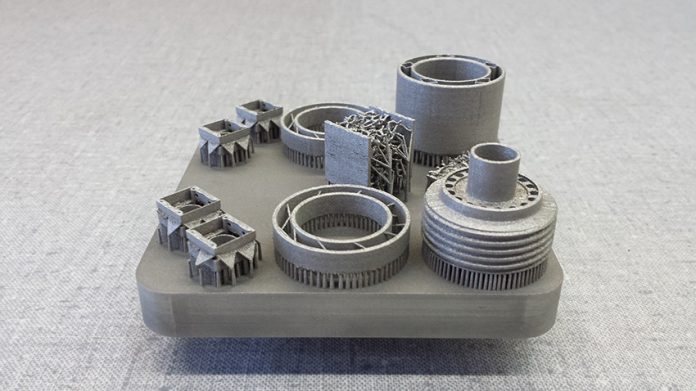The University of Applied Sciences’ research group discuss the challenges of mechanical systems and the benefits they bring to everyday life
Mechanical systems are hardware products – often with integrated controls – which shall simplify and improve our lives. A few examples are manufacturing machines, positioning devices, vehicles and their components, etc. Their function is closely controlled by adapted electronics & software, monitoring data can be produced by integrated sensors allowing for new function and maintenance concepts. In the age of digitalisation and networking, their development not only demands strong competences in the field of mechanical engineering itself, but also requires a holistic perspective and an interdisciplinary approach.

The Lucerne University of Applied Sciences and Arts’ Competence Centre Mechanical Systems (CCMS) focus is the development of such systems. Its areas of expertise are design, simulation, mechanics, hydraulics, robotics, automation, production and measurement engineering. Driven by the ever increasing complexity of mechanical hardware, system approaches are inevitable for development and problem solving. In this sense its technical and methodological skills in all these areas are the centre’s greatest strength.
The daily research and development work of the CCMS is based on a strong collaboration with industrial partners. Located in Central Switzerland it provides the Swiss industry with application oriented solutions. In order to provide answers in an increasingly competitive environment, its research activities are focused on the future challenges. More and more projects and activities address some of the major key research areas in the context of Industry 4.0, i.e. virtual product development, additive manufacturing and automation. The following 3 examples emphasise these topics.

Virtual Product Development
Today the optimisation and development of new products is hardly imaginable without the use of numerical simulation methods. Even for demanding manufacturing processes, these techniques are used to optimally adjust the production parameters. The Stöckli Swiss Sports AG produces approx. 50,000 pairs of skis per year, mainly at its location in Malters, Switzerland. As a premium manufacturer a high quality at low reject rate is required. Additionally the trend towards customised products requires an increasing degree of flexibility and short changeover times. This can only be achieved with an in-depth understanding of the physical processes occurring during production. Virtual models can provide this understanding.
Within the framework of a research project financially supported by the Commission for Technology and Innovation CTI, the CCMS developed a computer model that simulates the complete ski manufacturing process. In doing so, the individual layers of the ski are glued together in a hot-pressing process. Machine and process parameters, as well as the initial materials of the skis determine their shape and stiffness. Based on the finite element method (FEM), the transient temperature profile is simulated during the heating and cooling phases and the residual stresses resulting from bonding are computed. The validity of the model was confirmed by measurements and extensive tests.
With such virtual models, a qualitative and even quantitative prediction of the main characteristics of a ski is possible. This is an innovation in ski development and helps to ensure the long-term competitiveness of Stöckli as an independent Swiss ski manufacturer.
Additive Manufacturing
Rapid prototyping technologies are used in student and engineering projects. Different facilities are available to generate 3D-models for analysis of early design concepts. Besides commonly used plastic fused deposition (FDM) recently activities are focusing on metal selective laser melting (SLM) for additive manufacturing. The CCMS offers analysis and services for the complete process chain, i.e. 3D data processing, design optimisation, build process, post-processing/finishing, testing and material characterisation.

For future applications major advantages in functional integration of assemblies and structural optimisation are expected. Especially the design of variable stiffness and damping gives completely new opportunities for development of new products or components. In the context of additive manufacturing a detailed material characterisation is of great importance. Dimensional aspects of parts and surface finishing have to be taken into account – using existing and new measurement equipment at hand. A micro tensile testing device was developed with special specimen design. Further aspects of the research activities of the CCMS will consider the use and robotic assisted removal of supporting structures.
Automation
A very lively field in the context of Industry 4.0 is automation and robotics. Not only are the interconnection of data from and to the robots of importance, but also the smart reaction of robots to imperfect environment (e.g. parts not placed exactly to an expected location), as well as collaboration with humans (e.g. recognition of human body parts in the path of tool or gripper). The CCMS is looking for smart ideas to tackle such problems by using visual and tactile sensing techniques and focus on their implementation into industrial robots, if possible even to upgrade available hardware and by this enabling our industrial partners on their way to smart factories.
Ralf Baumann
Head of Competence Centre
Mechanical Systems
Lucerne University of Applied Sciences and Arts
ralf.baumann@hslu.ch
Please note: this is a commercial profile











